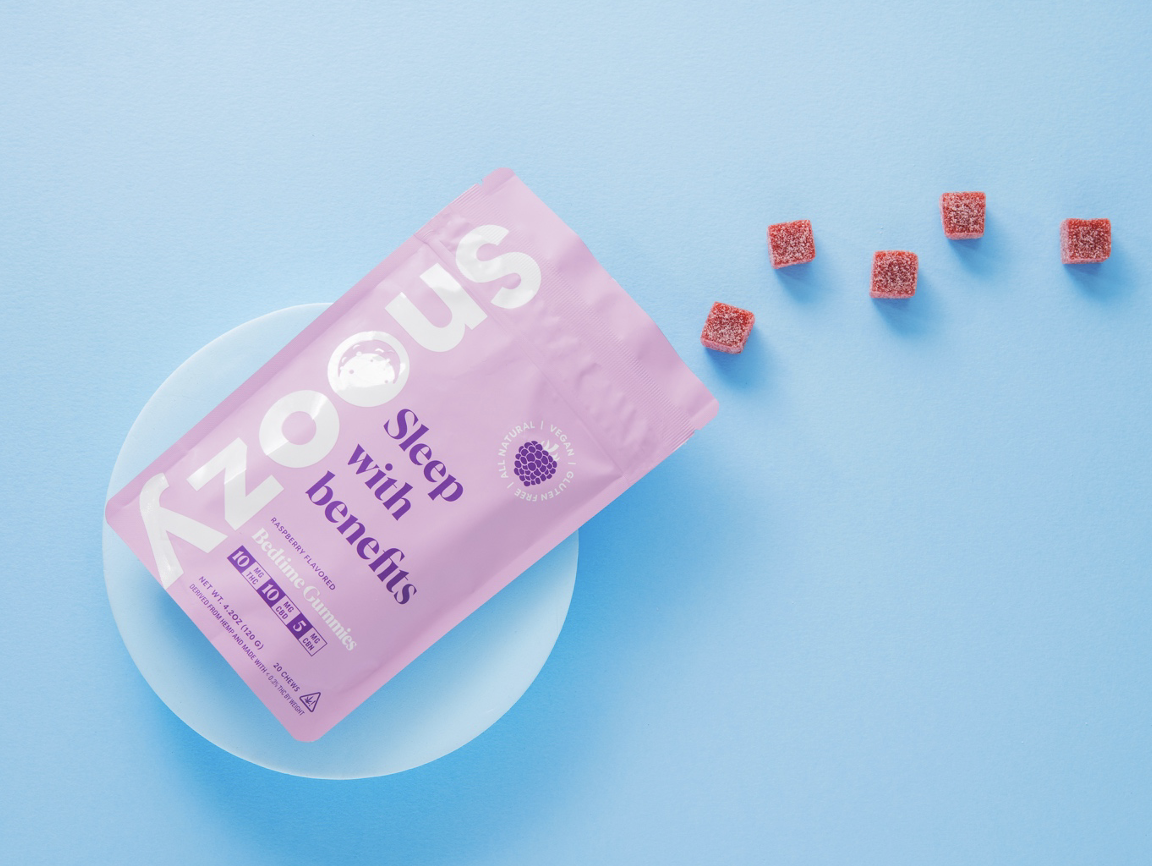
Snoozy Main Image.
Sleep disorders are becoming increasingly common in recent years. According to research from the American Sleep Association, about 70 million adults in the United States suffer from different sleep disorder symptoms. Around 40 million of this figure experience insomnia, and 15% overall are dealing with chronic insomnia.
The drastic increase in the number of people suffering from sleep disorders has increased the use of cannabis to provide some relief. Below, we’ll jump into the science behind cannabis and its impact on sleep, how to time your ingestion, and what cannabis products are most effective for restful night’s rest.
The science behind cannabis and sleep
The cannabis sativa genus has two well-known flowering plants: hemp and marijuana. Cannabidiol (CBD) and delta-9-tetrahydrocannabinol (THC) are the two most abundant compounds, called cannabinoids, that people recognize. THC is the cannabinoid most associated with producing the “high” from consuming cannabis. The effect of THC is psychoactive, meaning it alters mood, perception, and consciousness.
Studies have shown that ingesting cannabis with high concentration of THC might reduce the amount of REM sleep. Less time spent in the REM phase means less time dreaming and more time in deep sleep – the period where your body repairs tissues, works on growth and development, boosts your immune system and builds up energy for the next day.
It’s essential to keep in mind that each stage of sleep has equal significance. It’s not recommended to use any sleep aid on a long-term basis.
Timing your consumption for bedtime
Timing is important when it comes to using cannabis, especially for sleep.
When we ingest cannabis, it is processed from our stomach to our liver, which leads to a longer duration of effects that can last up to 8 to 12 hours. While everyone’s physiology is different, it’s usually better to ingest the marijuana at least an hour before bedtime. An hour before bedtime is recommended because the cannabis will work for about three to four hours, helping you to fall asleep. Itsbetter to allow some time for the effects to kick in before climbing into bed, this way the edibles aren’t hitting you right as lay down – which could prevent sleep.
Which cannabis products should you take to help you sleep?
Snoozy Delta 9 THC Gummies for Sleep help you get the rest you need when you can’t go to bed. Each raspberry-infused Snoozy gummy is formulated with organic and natural ingredients to produce a gluten-free, vegan gummy.
Inside a Snoozy Gummy
THC: Delta-9-tetrahydrocannabinol is the most well-known cannabinoid in the plant and is capable of inducing a variety of sensory and psychological effects, including mild reverie, euphoria, increased sensory awareness, and some therapeutic benefits.
CBD: cannabidiol – commonly used to address anxiety and for people who suffer through the misery of insomnia, studies suggest that CBD may help with both falling asleep and staying asleep.
CBN: also known as cannabinol, is a non-intoxication cannabis compound that offers numerous therapeutic benefits. it’s best known for its unbeatable sedative effect.
Chamomile: The daisy-like flowering plant comes from the Asteraceae family of plants (which also includes sunflowers, Echinacea and marigold) and is most famously known as a relaxing herb.
L-theanine: An amino acid found in green tea, L-theanine facilitates relaxation, lessens anxiety, and improves sleep quality without sedation.
More research is needed to fully understand cannabis’ long-term effects on sleep and any risks associated with long-term use, even though it has been shown to help people sleep better. Cannabis should not be used as a replacement for visiting a doctor if you are having trouble falling or staying asleep, so it’s important to always speak with a healthcare professional.















